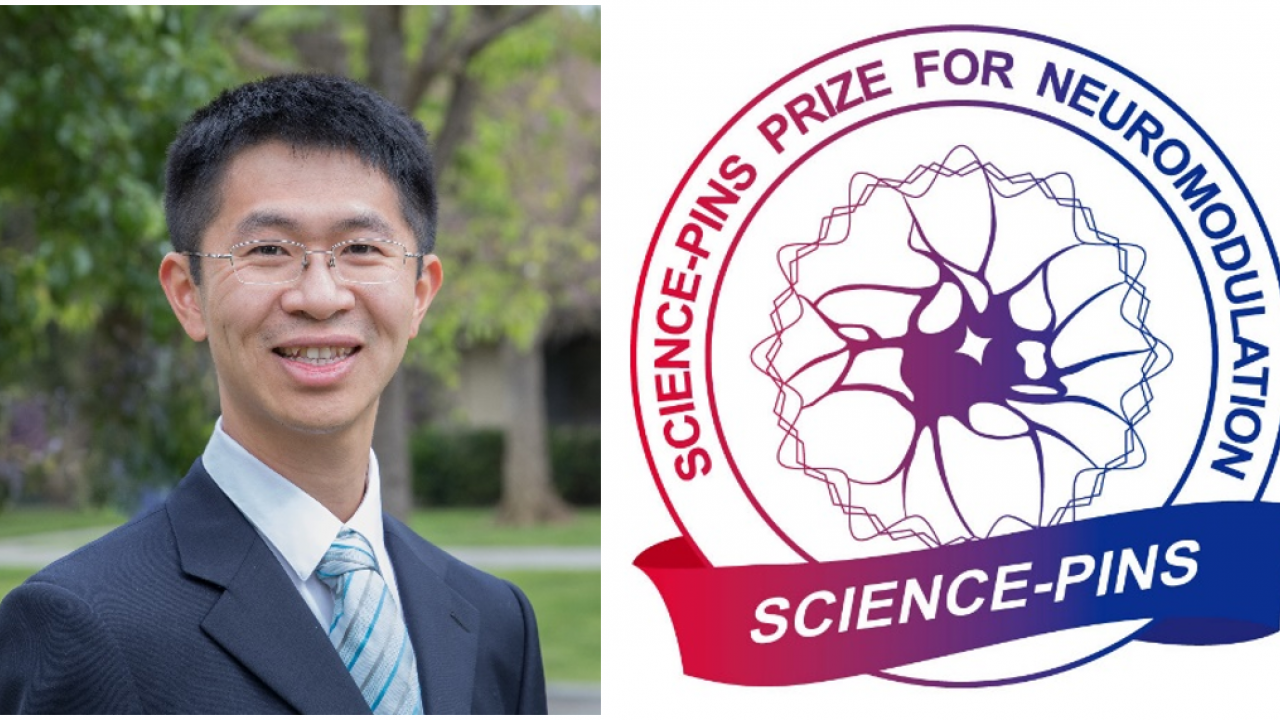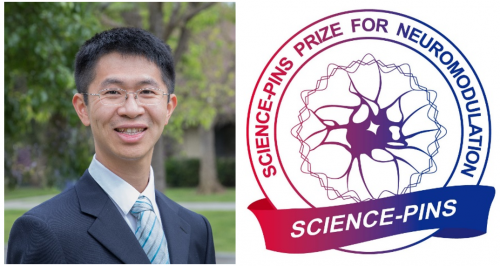
Dr. Weijian Yang a Finalist for the Science/PINS Neuromodulation Prize
Quick Summary
- Dr. Weijian Yang recognized by the AAAS for two-photon holographic optogenetics
- This technique could allow neuroscientists and clinicians to modulate neuronal activity in the brain with greater specificity

Weijian Yang, assistant professor of electrical and computer engineering, recently received the honor of being a finalist for the Science and PINS Prize for Neuromodulation. The prize is co-sponsored by the American Association for the Advancement of Science (AAAS) and Beijing’s PINS Medical Equipment Co. Ltd., a high-tech enterprise with a focus on neuromodulation and stimulation of the brain and nervous system. It’s awarded each year for innovative research that modulates neural activity through physical (electrical, magnetic or optical) stimulation of targeted sites in the nervous system with implications for translational medicine.
Science Magazine, one of the main publications of the AAAS, spotlighted Yang’s research project, which allowed for the modulation and observation of more specific parts of the brain. “We have developed two-photon holographic optogenetics, which can precisely modulate the activity of a group of user-defined neurons. This is a combination of three techniques: holographic light patterning, two-photon excitation, and optogenetics. The holographic light patterning splits the laser light into many beamlets, the two-photon excitation ensures each beamlet can be confined into a small 3D volume, and optogenetics technique embeds in the neurons' light-sensitive ion channels or ion pumps which can activate or silence the neurons when illuminated.”
According to Yang, the brain is the universe’s most sophisticated masterpiece, but one barrier that holds us back from understanding the brain is our lack of appropriate tools. The United States government has launched a recent effort, the Brain Research Through Advancing Innovative Neurotechnologies (BRAIN) initiative, intended to promote the development of brain imaging tools. Yang, who has been awarded two BRAIN Initiative grants, is one of many researchers now working in this exciting space. He feels that understanding the circuit wiring of the brain is as critical as developing new therapeutics to treat neurological diseases and ensure brain health.
Currently, electrically stimulating the brain by penetrating it with electrodes is the state-of-the-art technique. However, that is invasive in people or live animals, and not very specific: many neurons near the electrodes get stimulated at once. Yang’s two-photon holographic optogenetics is much less invasive and specific enough to allow researchers to study and interrogate the neurons responsible for a specific brain process or activity.
Yang says it will still take significant effort before optogenetics can be safely and effectively applied in a clinical setting. “Optogenetics requires inserting foreign genes into neurons…we need to ensure the genetic engineering is safe and efficient.” Optogenetics is part of a therapy that’s in clinical trials for vision restoration in the retina, but there are even more safety concerns for using it in the brain. Still, though, Yang is optimistic about the therapy’s future use. “Though it may not happen too soon, with combined efforts from experts in various fields, I think the transition of optogenetics from an investigative tool to a true therapeutic technique could be realized in the foreseeable future.”
Yang feels highly supported at UC Davis’ ECE department. “My research in ECE cuts across engineering, computation and neuroscience. I feel the environment at UC Davis is excellent for conducting such multidisciplinary research, as I am constantly benefited by discussion and collaboration with experts in engineering, statistics, fundamental neuroscience and translational medicine.”

